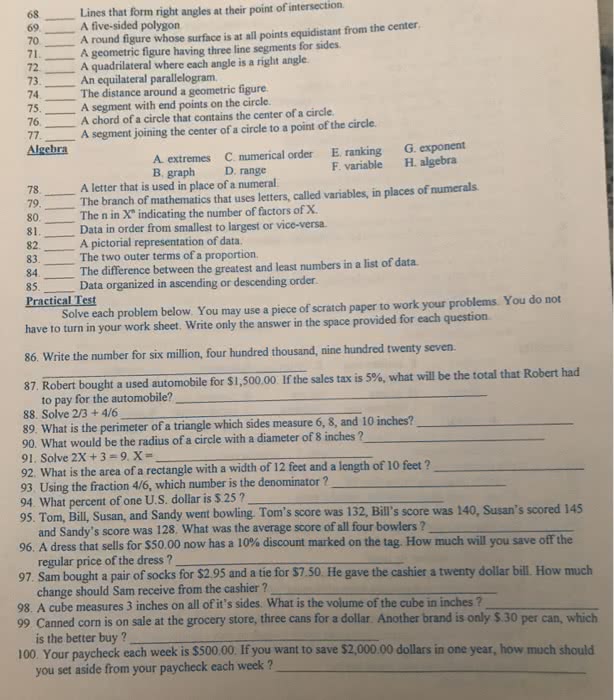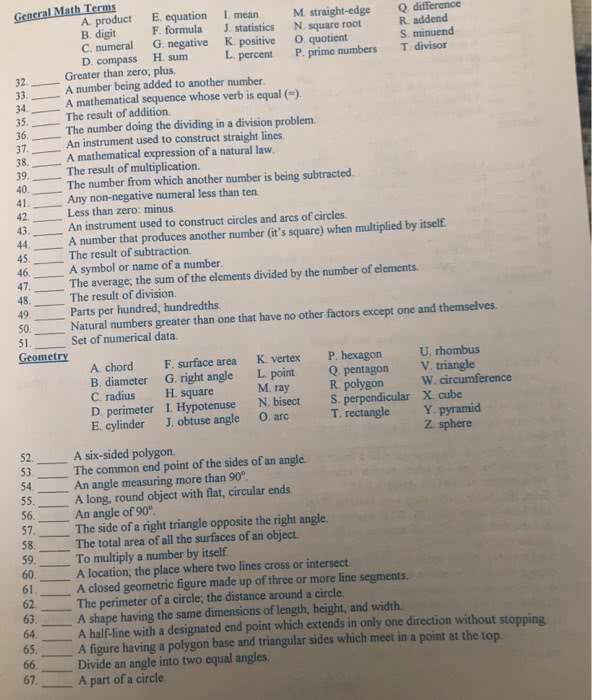MATH-UA 121 Lecture Notes - Lecture 3: Pythagorean Theorem, Parallelogram, Quadrilateral
19 views3 pages
22 Sep 2016
School
Department
Course
Professor
Document Summary
Proportionality, midline theorem, similarity, pythagorean theorem, etc. The ratio of 2 numbers a and b, where b is not equal to 0, is the quotient a/b, also written a:b. A proportion is an equation that states that 2 ratios are equal. Proportion: a/b = c/d (a is the 1st term, b is the 2nd term, c is the 3rd term, and d is the 4th term). A:b = c:d (b and c are the means; a and d are the extremes. ) In a proportion, the product of the means is equal to the product of the extremes, and conversely, if all terms are nonzero theorem. In a/x = x/b, x is the mean proportional, or geometric mean, between a and b. If the means of a proportion are equal, then each is the mean proportional or geometric mean between the extremes. The geometric mean between positive numbers a and b is (the square root of a multiplied by b).
Get access
Grade+
$40 USD/m
Billed monthly

Homework Help
Study Guides
Textbook Solutions
Class Notes
Textbook Notes
Booster Class
10 Verified Answers
Class+
$30 USD/m
Billed monthly

Homework Help
Study Guides
Textbook Solutions
Class Notes
Textbook Notes
Booster Class
7 Verified Answers

